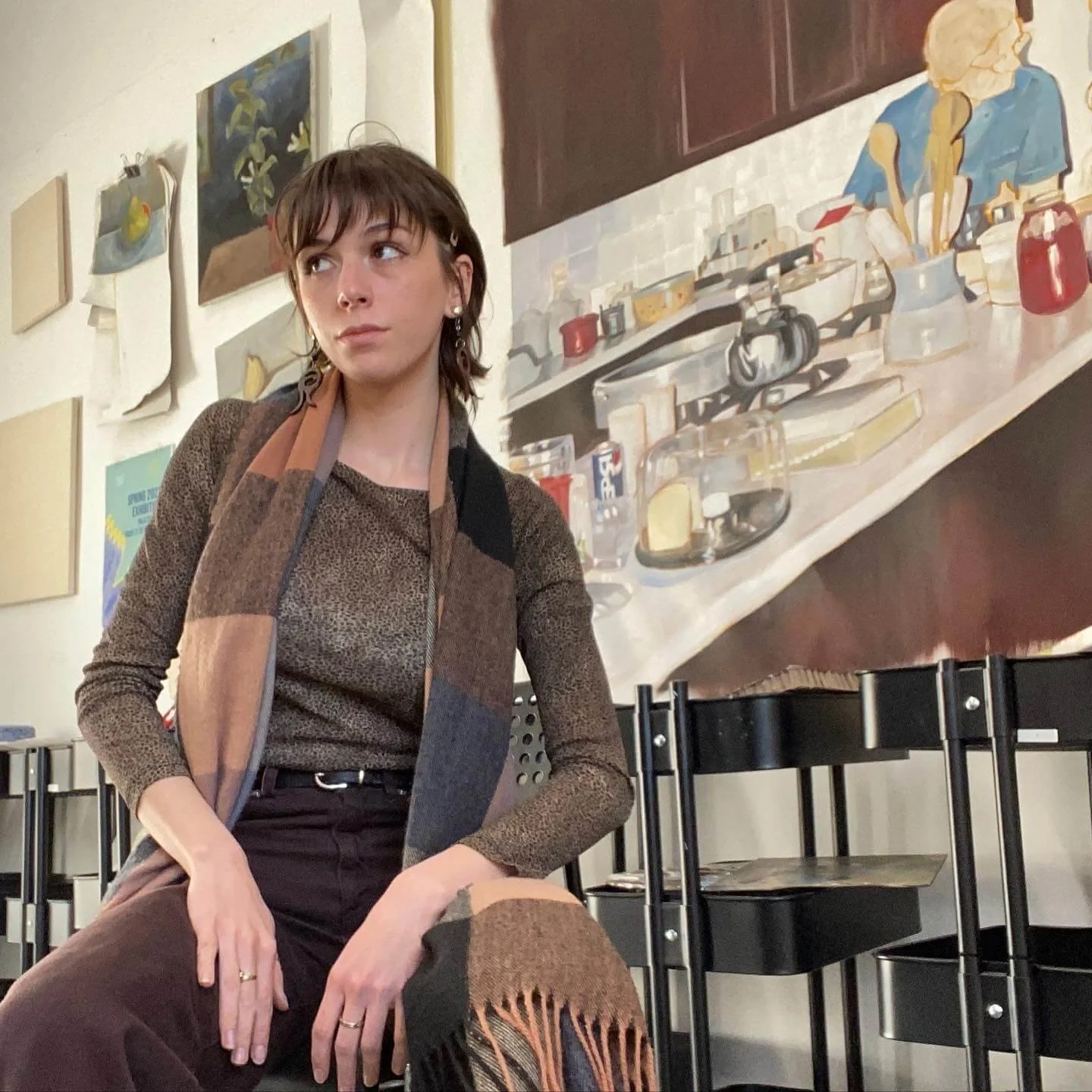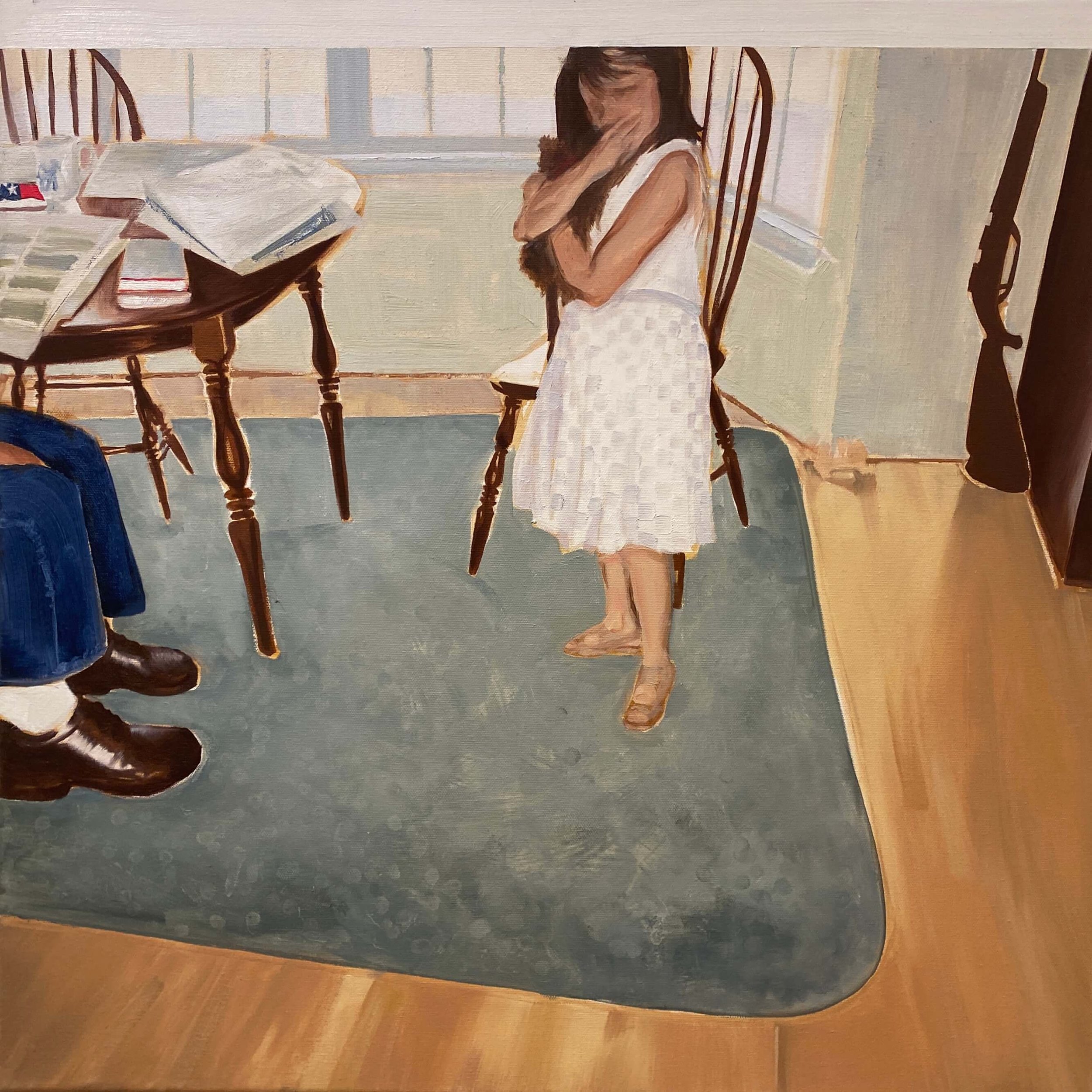Kristin Fiorvanti
Kristin Fiorvanti is a multimedia artist born in Fairfax, Virginia, in 1998. At 20 years old, she won an international art competition held by her art academy, Accademia Riaci, which allowed her to study abroad in Florence, Italy, for seven months. Her style is both realistic and impressionistic, utilizing traditional painting techniques learned from studying Renaissance and Impressionist painters.
During the COVID-19 pandemic, Kristin built an online creative community on social media and expanded her studies in the acclaimed art program at Virginia Commonwealth University. She now studies Media and Communications at John Cabot University in Rome, where she has joined a film company as a Production Designer and Art Director on various projects that emphasize diversity in the media. Kristin is passionate about careful brush strokes, excavating untold stories, and exploring various media to do so.
She has exhibited her work in group shows and workshops across Italy and the U.S., continuing to expand her practice through intercultural interactions in the melting pot of Rome. Kristin expects to graduate in the spring of 2024 and aims to pursue an interdisciplinary, directorial path in the visual arts, which may include an MFA and a teaching career in the arts.
Artist Statement
As an artist, I use various mediums to explore and reinterpret narratives. My work is focused on nostalgia, intimacy, and memory, inviting viewers to reflect critically as I do when studying my subjects. Recently, I've been creating pieces that highlight vivid childhood memories in isolated spaces, capturing snapshots of a young girl’s impression of identity in hypermasculine environments. I draw inspiration from family photo albums, uncovering the fascinating connections between characters and familiar settings and objects.
Through skillful rendering of figures and expressions, I bring otherwise private moments to a broader view, practicing a dialogue with my subjects that is reflective. My work examines themes of autonomy, materiality, and belonging, informed by impressionist artists such as Mary Cassatt and literary figures like Roland Barthes and Susan Sontag, who explore the impact of replication and photography on interpretation and permanence. My practice balances personal experiences with a broader examination of human experience. By embracing the challenge of dissecting my story, I continue to grow as an artist. The driving force behind my work is to inspire viewers to confront their own histories and identities through subtle points of commonality found within the work.
www.kfiorvanti.com
How has the environment you grew up in affected your art practice?
I grew up with two crafty grandparents. My grandmother’s library was full of books on how to draw and paint, and I would spend hours at the kitchen table learning to replicate what I saw in those books. In our little outbuilding, where my grandfather would make furniture and do wood crafting, my grandmother had a room dedicated to oil painting. There, I have special memories of painting rocks together and watching tutorials from Bob Ross. My father was often deployed in the military, and I spent a lot of time away from my mother as well. Crafting and making cards quickly became my little love language, and to this day, as I live in Italy away from family, I can say that it still serves that function.
If your artwork was a mirror, what would it reflect?
My recent work reflects my history. If it were a mirror, my artwork would reflect a childlike curiosity for all that’s inside an image. The subject matter I’ve chosen echoes nostalgia, girlhood, and coming of age.
What is the most difficult part (or your least favorite part) of your process?
There are many aspects of my art-making process that I have been working hard at improving—stepping back, timing myself, and knowing when a piece is finished. However embarrassing, I have to admit that the cleaning process is always my least favorite.
Pursuing ‘artist’ as a career is not for the faint of heart. What is the most rewarding aspect of this pursuit?
The most rewarding aspect of being an artist is having a skill set that allows me to bring other people’s creative visions to life. As much as I enjoy showing my work and connecting with people at shows, some of my sweetest memories are completing commissions that people can keep near and dear to them.
If your art is in a lineage of artists working within similar veins, who would be part of your lineage and why?
Having migrated to Europe from Pennsylvania to study art during the Impressionist period, Mary Cassatt's story is a great inspiration to me. Her work highlights the private lives of women and their children. She had a graceful attention to detail, pattern, and color that I strive to evoke in my work as well.





